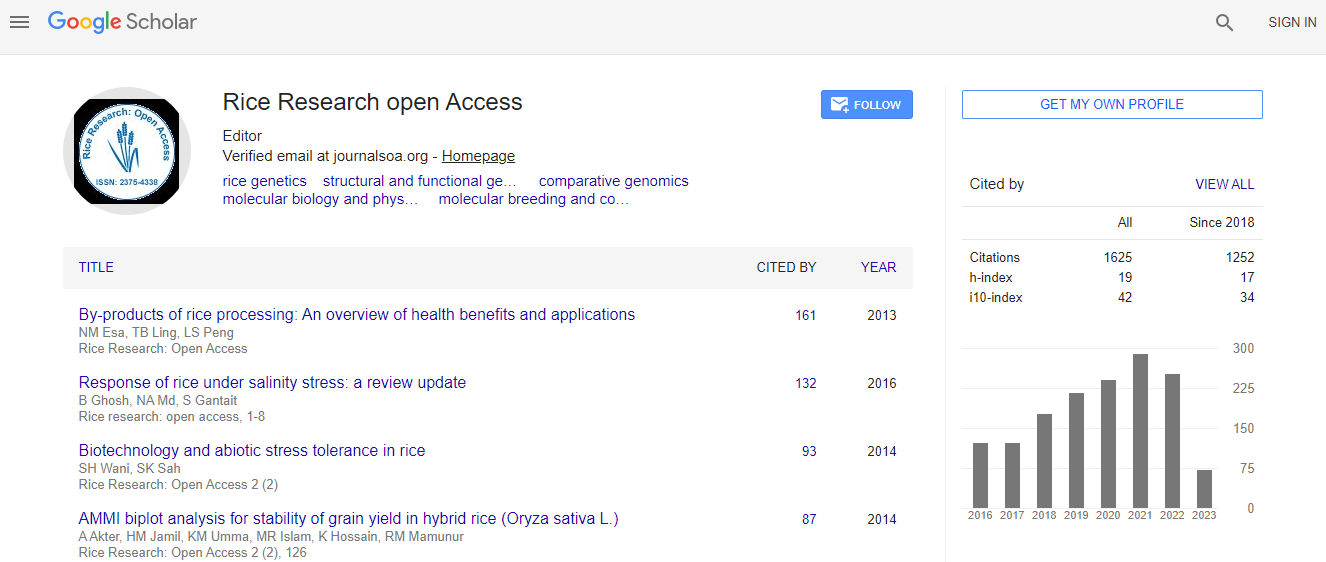Research Article
Pregerminated Brown Rice Enhanced NMDA Receptor/CaMKIIα Signaling in the Frontal Cortex of Mice
| Takayoshi Mamiya1*, Keiko Morikawa2 and Mitsuo Kise2 | ||
| 1Department of Chemical Pharmacology, Faculty of Pharmacy, Meijo University, Japan | ||
| 2FANCL Institute, FANCL Corporation, Yokohama, Japan | ||
| Corresponding Author : | Takayoshi Mamiya Department of Chemical Pharmacology Faculty of Pharmacy, Meijo University 150 Yagotoyama, Tempaku-ku, Nagoya 468-8503, Japan Tel: +81-52-839-2737 Fax: +81-52-834-8090 E-mail: mamiya@meijo-u.ac.jp |
|
| Received February 13, 2014; Accepted March 17, 2014; Published March 19, 2014 | ||
| Citation: Mamiya T, Morikawa K, Kise M (2014) Pregerminated Brown Rice Enhanced NMDA Receptor/CaMKIIa Signaling in the Frontal Cortex of Mice. J Rice Res 2:123. doi: 10.4172/jrr.1000123 | ||
| Copyright: © 2014 Mamiya T, et al. This is an open-access article distributed under the terms of the Creative Commons Attribution License, which permits unrestricted use, distribution, and reproduction in any medium, provided the original author and source are credited. | ||
Related article at Pubmed Pubmed  Scholar Google Scholar Google |
||
Abstract
We previously reported that the continuous feeding of mice with pellets of pregerminated brown rice (PGBR; Hatsuga genmai in Japanese) enhances their spatial learning. Here, we show the possible relationships of the enhancement of learning and memory with the glutamatergic system in the brain of PGBR-pellet-fed mice. The enhancement of learning and memory in the novel object recognition and Y-maze tests after 28-day-feeding of PGBR pellets was inhibited by dizocilpine (10 μg/kg s.c.), an N-methyl-D-aspartate (NMDA) receptor antagonist, whereas the extracellular glutamate level and the glutamate content were not affected in the frontal cortex and hippocampus. In the frontal cortex of mice fed PGBR pellets, the phosphorylation of calcium calmodulin kinase IIα (CaMKIIα), one of the important events after NMDA receptor activation, was facilitated compared with that of mice fed control pellets. This facilitation was inhibited by dizocilpine (10 μg/kg s.c.), whereas the phosphorylation of extracellular signal-regulated protein kinases (ERKs), another index of memory formation was not affected by PGBR pellets. On the other hand, in the hippocampus, there was no significant difference in the phosphorylation of CaMKIIα and ERKs between the control and PGBR pellets-fed mice. Taken together, these results suggest that PGBR enhances the NMDA receptor/CaMKIIα signaling in the frontal cortex, leading to enhanced learning and memory in mice.

 Spanish
Spanish  Chinese
Chinese  Russian
Russian  German
German  French
French  Japanese
Japanese  Portuguese
Portuguese  Hindi
Hindi 
